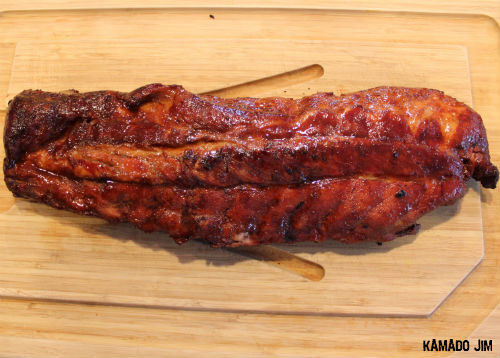
I awoke this past Saturday morning and came to a startling conclusion: there were only two days of summer left and we still hadn’t gotten around to cooking a rack of ribs on our relatively new Kamado Joe yet!
Solution? After getting a much needed hair cut, I stopped off at Kroger and despite their selection of ribs sucking majorly (maybe a bunch of other folks had my same idea), I found one of the last racks of frozen baby backs they had left and threw it in the cart.
The first order of business was to thaw the ribs which only took 30 minutes or so. I simply filled our sink with warm water, plopped them in, and waited it out. Afterward, there was a little bit of silver skin to peel off, which I painstaking did and then we were ready to proceed with the rub.
Score! Another opportunity to dump Honey Hog on something! After applying a thin layer of yellow mustard to the ribs to serve as a binder (it imparts zero flavor into the meat), I applied a liberal coating of Honey Hog and let the magic begin.
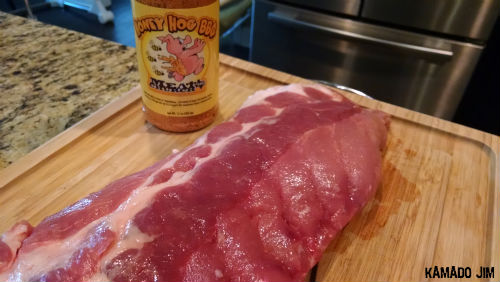
You can see in the picture below, that after just 30 minutes, the Honey Hog began to penetrate the meat and transformed the ribs from plain jane into a glistening, gold beauty. Seriously, just look at that picture for a few seconds and appreciate that color. Good stuff and we haven’t even started cooking yet!

After letting both sides sit for about 30 minutes each to allow the rub to penetrate, I fired up the Kamado Joe and threw on six chunks of apple wood. Apple is pretty mild in flavor and pairs very nicely with pork.
When the Kamado was sitting at 250F, I placed the ribs on, adjusted the vents to maintain 250F, and then went about my day for the next 3 hours while the ribs smoked.
I’ve said it before and I’ll say it again, a wireless meat thermometer (such as the one I recommend) is a must for leaving meat on the Kamado while you’re away. If you don’t already have one, pick one up from the shop!
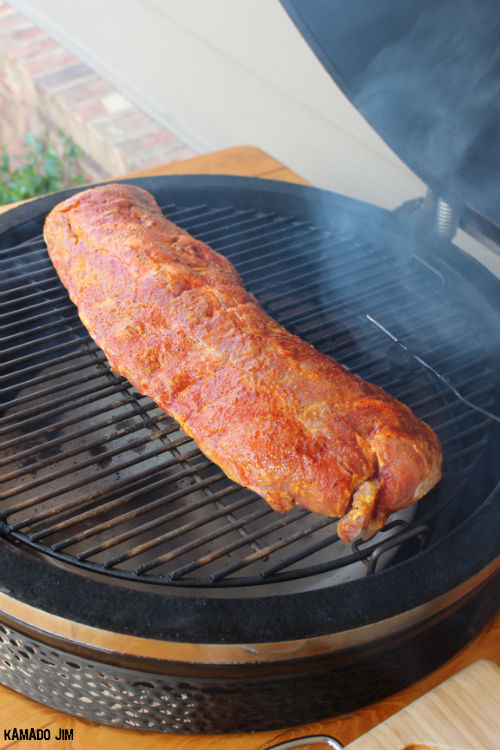
After the ribs had smoked for 3 hours, I took them off the Kamado Joe and placed them on a piece of heavy duty foil. Speaking of which, here’s a pro-tip for you: don’t even both with regular aluminum foil when barbecuing. It’ll rip pretty much instantaneously. Always make sure to pick up heavy duty aluminum foil and your life will become much easier.
So once placed on the foil, I coated both sides with a little brown sugar and brushed on a thin coat of honey to ensure that they had a sweet taste while also helping to give them that mouthwatering “glazed” look. I also took the liberty of spritzing them with a 50/50 mix of apple juice and apple cider vinegar which helps in tenderizing the meat.
I then wrapped them up tightly and placed them back on the Kamado for another 2 hours.
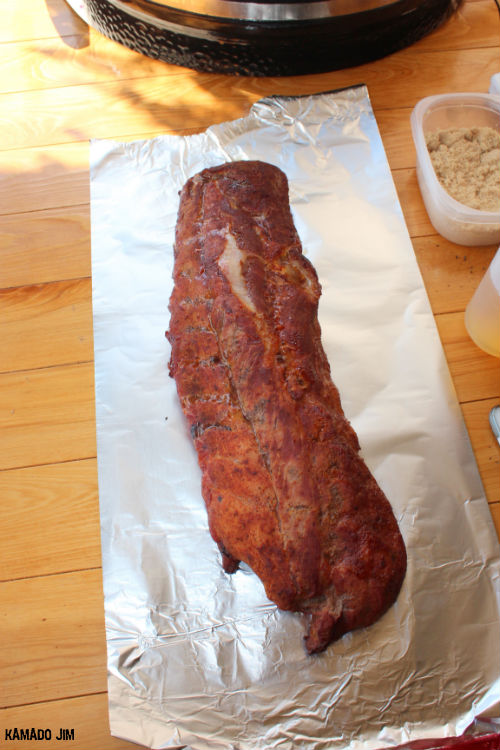
Two hours later and it was time to unfoil and baste in a 50/50 mixture of barbecue sauce and honey.
At this point, I put them back on the Kamado for about another hour or until they feel done. You can really see the meat starting to peel back from the bone, which means they’re in the home stretch.
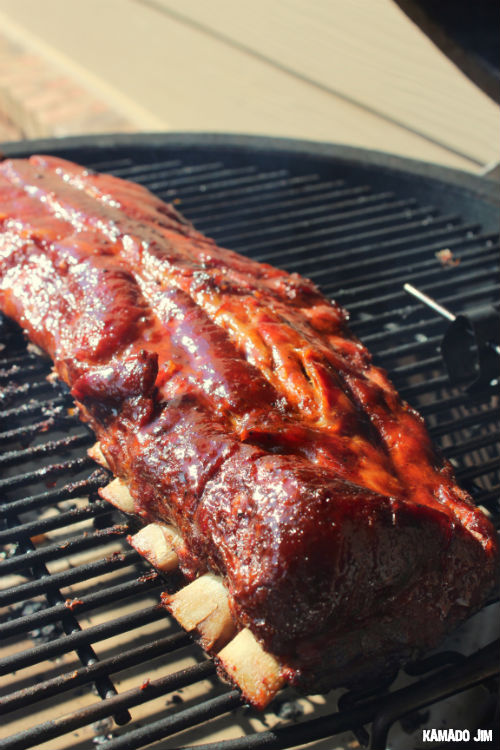
It only took another 40 minutes or so and these bad boys were ready to come off. Again, I gave them a very light glaze of the barbecue and honey mixture and they were good to go!
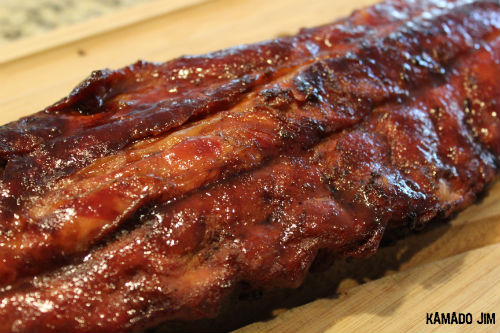
I’m not going to lie; I ate a third of the rack standing at my kitchen counter. They were every bit as delicious as they look in these pictures too. While they may appear heavily sauced, they were anything but, so the subtle smoke flavor still came through beautifully in each delightful chunk of meat.

How do you cook ribs on the grill?
There’s definitely no shortage of rib recipes out there. The 3-2-1 method, the 2-2-1 method, foil, no foil, etc.
How do you prefer to cook your ribs? What’s worked out for you in the past and what hasn’t? I’d love to hear your feedback in the comments below.


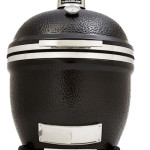
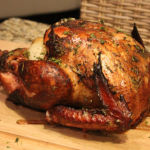
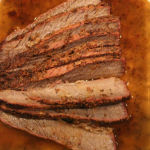
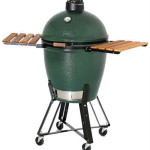
Hi Jim! Nice to see a fellow metro ATL KJ owner singing their praises! Great blog! I am a recent new owner of a KJ (red Big Joe) so I share in your enthusiasm.
As for ribs – those methods you noted are tried and true. Honestly, though, coming from a WSM like you, I now know the KJ (and BGE, Primo, etc.) holds enough moisture in my opinion that you can leave spares and back ribs be without foiling. Approx. 5 hrs on the back ribs depending on feel and around 6 for spares or st. louis cut. I will check about 3/4 of the way into the cook to look for bark formation (i don’t want a thick bark on ribs, but would like some) and mop with ACV or apple juice or combination of both.
Happy smoking!
Jake
Jake – thanks so much for dropping by and I greatly appreciate your kind words. Perhaps we’ll run into each one of these days at one of the many BBQ festivals we’re lucky enough to enjoy in and around Atlanta.
You also totally hit the nail on the head with the moisture retention properties of ceramic grills – they’re just unrivaled. While I loved using my WSM, it just couldn’t compete with the ease and results that can be had on a Kamado.
We’re actually doing a slab of beef back ribs tomorrow and I can’t wait! Not as meaty as short ribs obviously, but I’ve yet to have a bad meal off the Kamado Joe 🙂
See ya around.